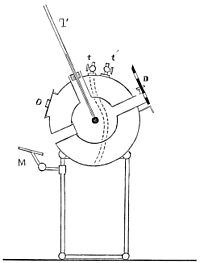Jules Violle facts for kids
Quick facts for kids
Jules Violle
|
|
|---|---|
| Born | 16 November 1841 Langres, France
|
| Died | 12 September 1923 (aged 81) Fixin, France
|
| Nationality | French |
| Known for | Solar constant Violle(measurement of directional light later devalued to define the international standard the candela) |
| Scientific career | |
| Fields | Physics Luminous intensity |
| Institutions | École Normale Supérieure, University of Grenoble, University of Lyon |
| Doctoral students | Pierre Weiss |
Jules Louis Gabriel Violle (born November 16, 1841 – died September 12, 1923) was a French physicist and inventor. He is famous for his work on light and heat. Violle helped us understand how bright light is and how much energy comes from the Sun.
Contents
Jules Violle: A French Scientist
Jules Violle was born in Langres, France. He became a well-known physicist. Throughout his career, he taught at several important schools. These included the University of Lyon and the Conservatoire des Arts et Métiers in Paris. He also helped start new institutions. These were the Institut d'optique théorique et appliquée and the École supérieure d'optique. These schools focused on the science of light.
Measuring Light and Sun's Energy
Jules Violle made two very important contributions to science.
The Solar Constant
In 1875, Violle climbed Mont Blanc, a very tall mountain. There, he measured the solar constant. The solar constant is the amount of energy from the Sun that reaches Earth. Knowing this helps scientists understand Earth's climate.
The Violle Unit of Light
In 1881, Violle suggested a new way to measure light. He called this unit the Violle. It was based on the light given off by a small piece of platinum. This platinum had to be at its melting point. This was a big deal because it was the first light unit that did not depend on a specific lamp. Before this, light was often measured using candles.
The Violle unit was much brighter than old measures like candlepower. Later, in 1946, the international standard unit for light, called the candela, was created. One candela was defined as 1/60th of a Violle. This shows how important Violle's work was for measuring light accurately.
Other Discoveries and Inventions
Jules Violle also improved and invented many tools. These tools helped measure different types of radiation. He also found the exact freezing and melting points of palladium. Palladium is a rare and valuable metal. His work helped other scientists in their research.
See also
 In Spanish: Jules Violle para niños
In Spanish: Jules Violle para niños


